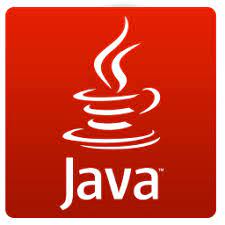Java, a stalwart in the programming world, continues to evolve with each new release. One of the significant milestones in Java’s journey is the release of Java Development Kit 8 (JDK 8). This version brought about groundbreaking features and enhancements, revolutionizing the way developers write and structure their code. In this blog, we’ll delve into the key features of JDK 8 and understand why it has become a game-changer in the world of Java programming.
I. Lambda Expressions: A Paradigm Shift in Java Programming:
One of the most anticipated features of JDK 8 is the introduction of lambda expressions. Lambda expressions enable developers to write concise and expressive code, promoting a functional programming style. This addition simplifies the process of writing code for parallel processing and enhances the readability of Java programs.
II. Stream API: Simplifying Data Processing:
Complementing lambda expressions, JDK 8 introduced the Stream API, which provides a powerful and expressive way to process data. With the Stream API, developers can perform operations like filtering, mapping, and reducing on collections with ease, enhancing both code conciseness and performance.
III. Default Methods: Forward Compatibility Made Easy:
Default methods allow interfaces to have method implementations, providing a backward-compatible way to add new methods to interfaces without breaking existing implementations. This feature facilitates the addition of new functionality to interfaces in future versions of Java without disrupting existing codebases.
IV. Functional Interfaces: A Foundation for Lambda Expressions:
JDK 8 formalized the concept of functional interfaces, interfaces with a single abstract method. These interfaces serve as the foundation for lambda expressions, allowing developers to leverage functional programming principles in Java.
V. Date and Time API: A Modern Approach to Handling Dates:
JDK 8 addressed the limitations of the previous Date and Calendar classes by introducing the Date and Time API. This modern API provides a comprehensive and flexible way to handle dates and times, making date-related operations more intuitive for developers.
VI. Nashorn JavaScript Engine: Bridging the Gap Between Java and JavaScript:
With JDK 8, the Nashorn JavaScript engine was introduced, providing a high-performance JavaScript runtime. This engine enables seamless integration of JavaScript code with Java applications, fostering interoperability and opening up new possibilities for developers.
VII. Improved Performance and Security:
JDK 8 brought several performance improvements and security enhancements. The introduction of the Metaspace memory area, the removal of the Permanent Generation, and the inclusion of the G1 Garbage Collector contributed to improved performance and memory management in Java applications.
VIII. Adoption and Industry Impact:
The adoption of JDK 8 has been widespread in the Java development community. Many existing projects have migrated to JDK 8 to take advantage of its features and improvements. Its impact extends beyond individual developers, influencing the Java ecosystem as a whole.
IX. Future of Java: JDK 17 and Beyond:
While JDK 8 set the stage for modern Java development, subsequent releases have built upon its foundation. The latest Long-Term Support (LTS) release at the time of this writing is JDK 17, showcasing the continued commitment of the Java community to innovation and improvement.
Conclusion:
Java JDK 8 marks a pivotal moment in the history of Java programming. Its introduction of lambda expressions, the Stream API, and other features has transformed the way developers approach coding in Java. As the Java ecosystem continues to evolve with subsequent releases, the impact of JDK 8 remains significant, leaving a lasting legacy of innovation and adaptability in the world of programming.
